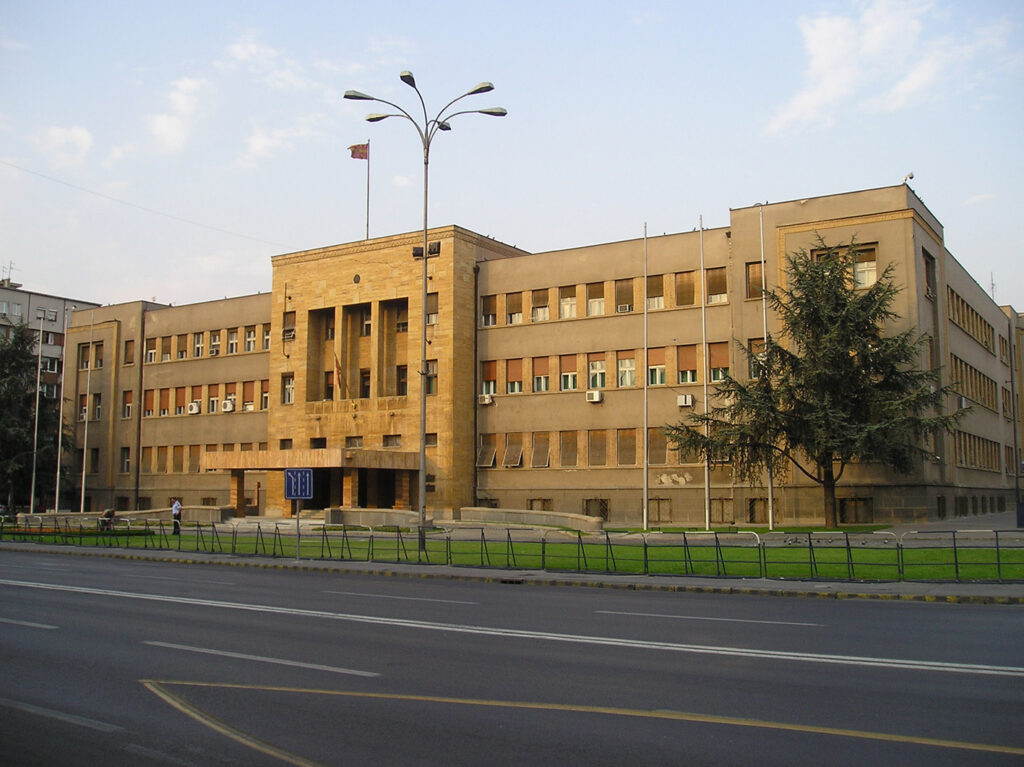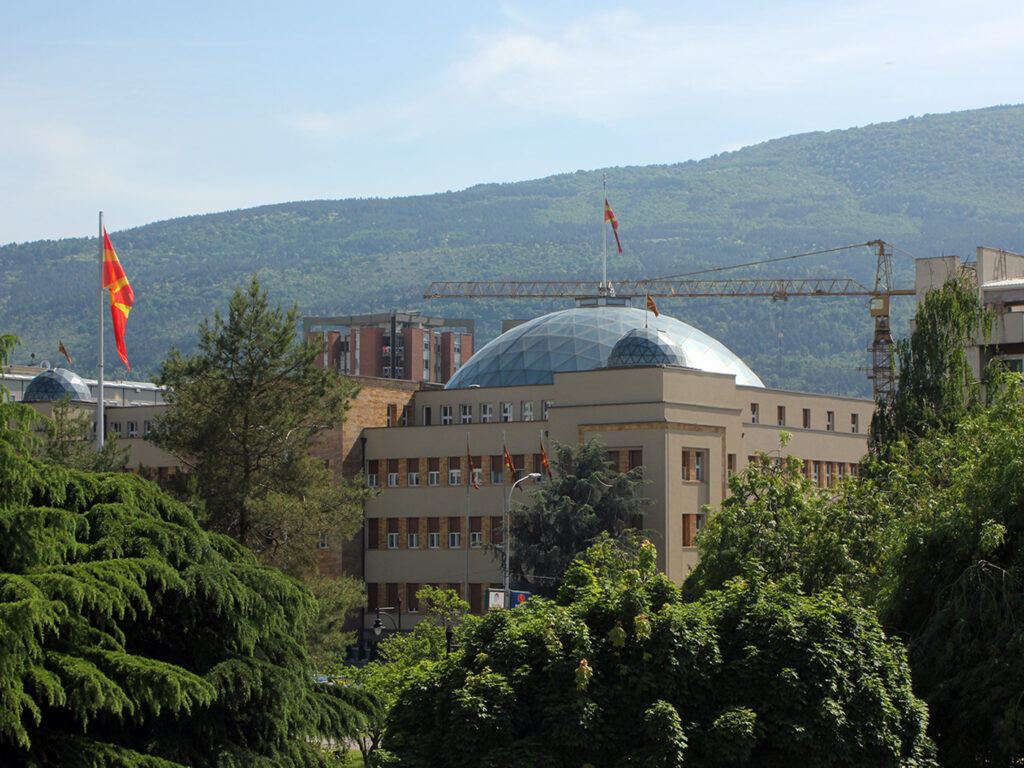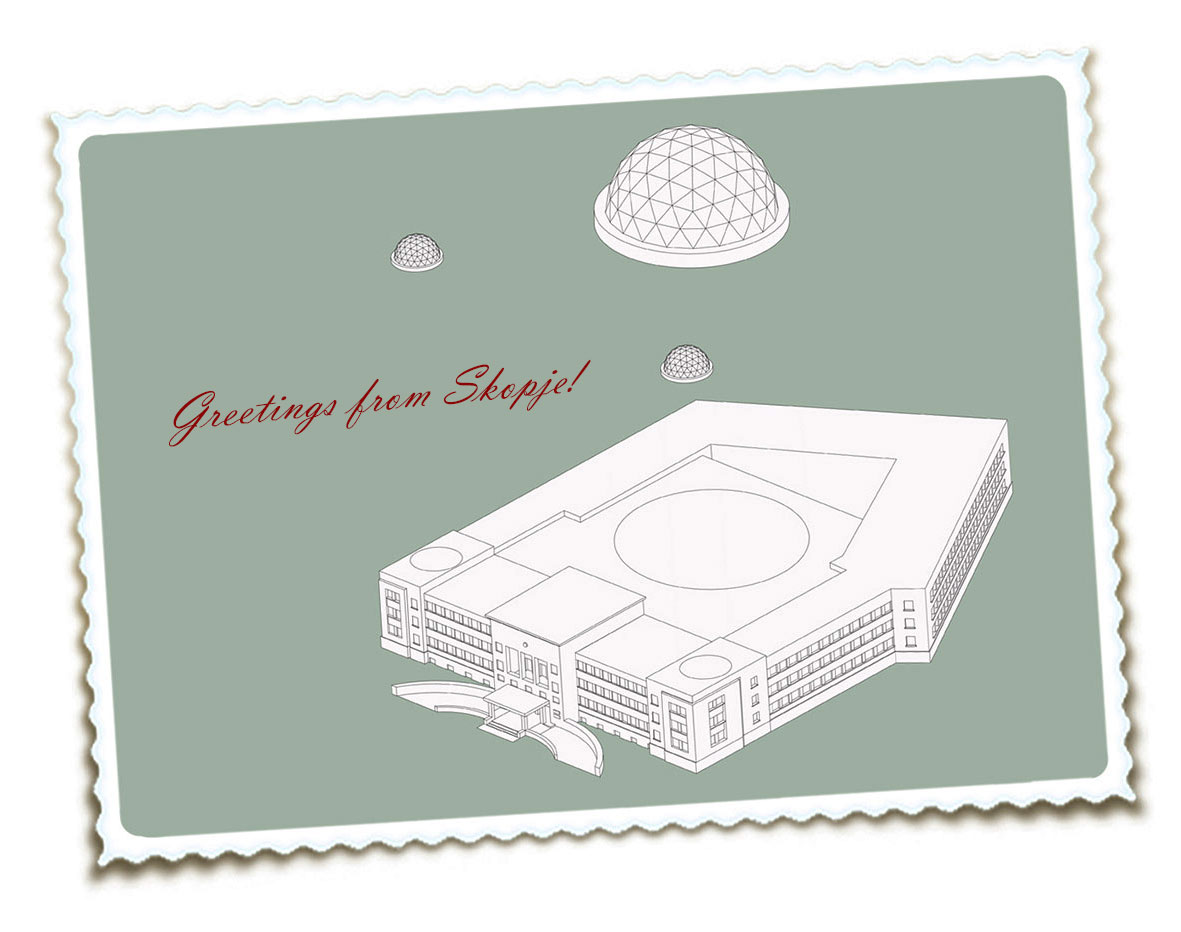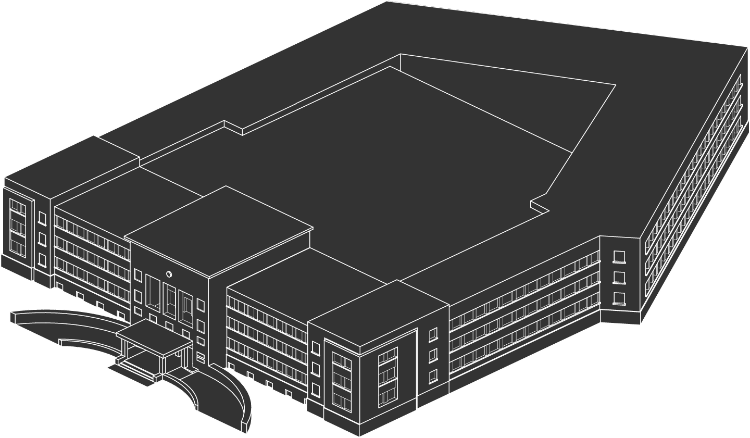Former Banate Administration
Victor J. Hudak
1938
Cupolas’ Addition
Kosto Mangaroski
2013


The building of the Assembly of the Republic of Macedonia was originally built as a Banate Administration in 1938 by the Czech architect Victor j. Hudak. It is a building that was part of the first modernization period of Skopje, the period of the ‘Yugoslavia Project’, when expressionism and functionalism started to influence the architectural production.
It is an example of an already existing urban artefact that has been modified by the Skopje2014 project.
In its plan and program distribution, historical references such as symmetry and emphasized central enterance are still present, but in its exterior, one can see structural simplification and abstraction. Its facade is freed from any historical eclectic decorative elements and has a pure geometrical composition with flat surfaces and simple cut out windows.
It belongs to the same modernization period as the National Theater (destroyed in the earthquake of 1963, but recently reconstructed) and the Chamber of Commerce (today an office building).
The building’s volume has the shape of a pentagon, forming an inner yard and five external facades.
In 1963, it was partly damaged with the earthquake and went under reconstruction in the following years, where new volumes were added.
After being the home of the local self-government, it became the seat of the whole administration of the Macedonian People’s authorities in 1944. With the newly gained Independence of the Republic of Macedonia in 1991, besides hosting the Assembly of the Republic of Macedonia, the building also became the seat of the Cabinet of the President of the Republic.
Since then it has gone through a few renovations, the latest one being the addition of three glass cupolas, done in 2013, as part of the Skopje2014 project. The author of this project is the Kosto Mangaroski.
This is a shifting step for the building’s identity. This addition doesn’t correspond to the architectural language the building already had. It is an alteration which is trying to rearrange the public perception of the building by presenting it as something that it is not. The new look of the Assembly denies its part in the beginnings of Skopje’s modernization and it’s promoting false historical values.
There is another ambivalent aspect to this cupolas’ addition – the obvious fact that the newly attached element is ‘borrowed’ from the Reichstag building in Berlin, a building from 1894, originally built with a glass cupola and in a Baroque Revival style.
One could interpret this renovation as an acknowledgment-seeking step. This appropriation of historical values could be understood as an attempt to provide a certain verification of this institution.
То sum up, The Assembly building is a piece of Skopje’s modernization heritage, whose historical values have recently been reinvented, changing it from a relevant original to a copy of a building from another spatial and historical context, seeking for an identity approval.

